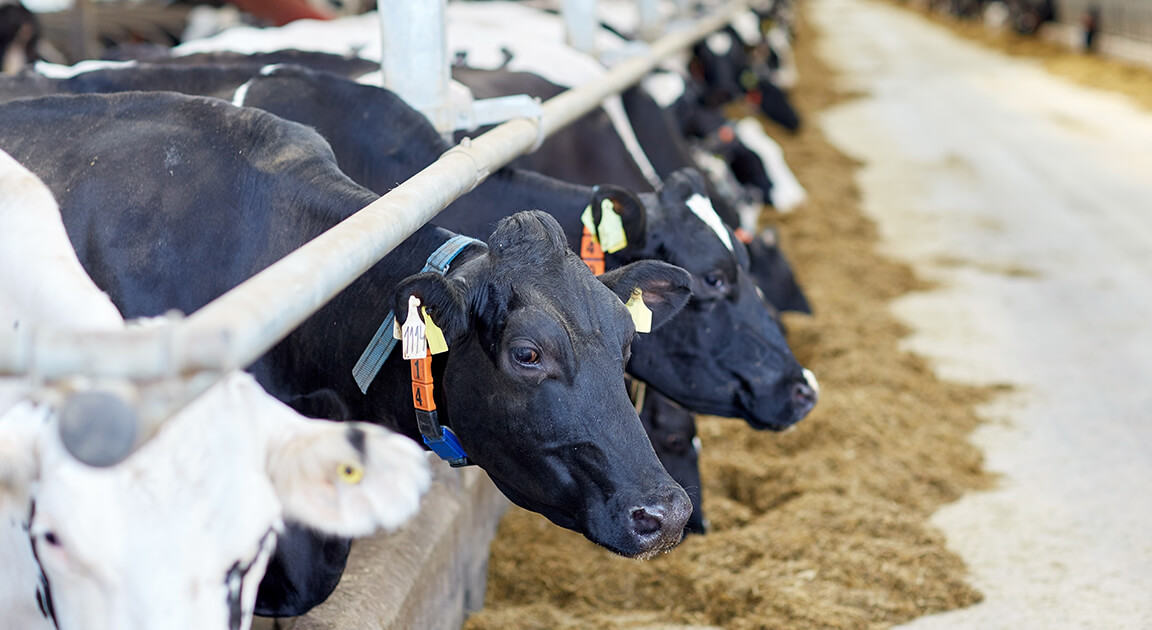
On May 19th, 2020, the USDA announced the details of the Coronavirus Food Assistance Program (CFAP). The program will provide $16 billion of direct payments to farmers and ranchers that were adversely affected by the coronavirus pandemic.
The turnaround time on these payments has been made a priority by the USDA. Applications are set to begin on May 26th, and payments will be issued within a week of receiving the application. Producers will receive 80% of their maximum payment with the other 20% to be paid later as funds remain available. The sign-up period will end August 28th. Producers will apply through their local Farm Service Agency (FSA) service center. Applications can be downloaded from farmers.gov/CFAP. Be prepared with documentation to support sales and inventory amounts.
Some highlights include:
- Participation in the Paycheck Protection Program will not affect eligibility for CFAP payments
- There is a $250,000 payment limitation per entity/person. However, unlike other FSA programs, payment limitations have been expanded for limited liability entities (Corporations, LLC’s & Limited Partnerships). Historically these entities would only receive one payment limitation, but with the CFAP, each owner that spends at least 400 hours per year in either labor or management of the entity would qualify for an additional payment limit. Entities are capped at three payment limits ($750,000).
- USDA has broken down the program into five different commodity areas:
- Non-Specialty Crops (Corn, Soybeans, Sorghum)
- Wool
- Livestock
- Dairy
- Specialty Crops
- The $900,000 average adjusted gross income test does apply to these payments. However, if 75% of adjusted gross income comes from farming, ranching, or forestry, then the $900,000 AGI limitation does not apply.
- Currently there is a list of ineligible commodities that would not qualify for a CFAP payment. These include but are not limited to alfalfa, rye, rice, soft red winter wheat, hard red winter wheat, white wheat, rice, eggs/layers, and sheep more than two years old. The USDA may reconsider these commodities if they can find support of a five percent price decline.
Non-Specialty Crops
Non-specialty crop payments will be made upon the lower of 50% of the producer’s 2019 production or the 2019 inventory that was not sold as of January 15th, 2020. The producer then will take that number multiplied by 50% then multiplied by the applicable payment rate for that crop. If the producer has sold all of his/her 2019 production by January 15th, 2020, they will not qualify for a payment on that particular crop.
There will be two separate payments, one based on a CARES Act payment rate, and one based on the CCC payment rate. For example, the Corn payment would be $0.32 CARES Act payment and $0.35 CCC payment for a total of $0.67 per bushel. You can find the other commodity payment amounts at farmers.gov/cfap/non-specialty.
The maximum payment a producer will receive on non-specialty crops is 25% of the 2019 production. This payment will then be further reduced below 25% if the farmer has more than 50% of the crop sold by January 15th.
It appears if the commodity is hedged but unsold there is no penalty or reduction.
Example based upon less than 50% of crop sold by January 15th (max payment):
A farmer produced 200,000 bushels of corn in 2019. As of January 15th, 2020, the farmer had 125,000 bushels unsold. The calculation would be based on the lower of 100,000 (50% of 2019 production) and 125,000 bushels of inventory as of January 15th. The 100,000 would then be multiplied by 50% then multiplied by $0.67 per bushel. The farmer would receive a maximum payment of $33,500.
Example based upon greater than 50% of crop sold by January 15th:
A farmer produced 200,000 bushels of corn in 2019. As of January 15th, 2020, the farmer had 60,000 bushels unsold. The calculation would be based on the lower of 100,000 (50% of 2019 production) and 60,000 bushels of inventory as of January 15th. The 60,000 would then be multiplied by 50% then multiplied by $0.67 per bushel. The farmer would receive a maximum payment of $20,100.
Livestock
Livestock payments will be made upon the sum of the producer’s number of livestock sold between January 15th and April 15th, 2020, multiplied by the CARES Act payment per head, and the highest inventory number of livestock between April 16th and May 14th, 2020, multiplied by CCC payment per head.
There will be two separate payments with one based on a CARES Act payment rate and one based on the CCC payment rate. For example, the Feeder Cattle (600 lbs or more) payment would be $139 CARES Act payment (cattle sold) and $33 CCC payment (inventory). You can find the other livestock payment amounts at farmers.gov/cfap/livestock.
Example:
A producer sold 300 head of feeder cattle (600 lbs or more) between January 15th and April 15th. The producer’s highest inventory of feeder cattle between April 16th and May 14th was 450 head.
The producer will be paid $139/head on the 300 head that were sold between January 15th and April 15th for a total of $41,700 CARES Act payment. They will also be paid $33/head on the 450 head that were in inventory between April 16th and May 14th for a total of $14,850 CCC payment. So, the producer would receive a total payment of $56,550 between the CARES Act payment and the CCC payment.
Please visit the USDA website for the most up-to-date information on this topic. If you need additional guidance on commodities not covered in this article (dairy, wool, or specialty crops), or if you have any questions, please reach out to your Lutz representative or email us at info@lutz.us.
Recent News & Insights
Lutz Gives Back + 12 Days of Lutzmas 2025
Tis the Season... For Market Forecasts
Tired of Complex Books? 8 Ways to Simplify Your Accounting
HR Solutions That Elevate the Employee Experience




%20(1).jpg?width=300&height=175&name=Mega%20Menu%20Image%20(2)%20(1).jpg)
%20(1)-Mar-08-2024-09-27-14-7268-PM.jpg?width=300&height=175&name=Untitled%20design%20(6)%20(1)-Mar-08-2024-09-27-14-7268-PM.jpg)

%20(1)-Mar-08-2024-09-11-30-0067-PM.jpg?width=300&height=175&name=Untitled%20design%20(3)%20(1)-Mar-08-2024-09-11-30-0067-PM.jpg)
%20(1).jpg?width=300&height=175&name=Mega%20Menu%20Image%20(3)%20(1).jpg)
%20(1).jpg?width=300&height=175&name=Mega%20Menu%20Image%20(4)%20(1).jpg)
%20(1).jpg?width=300&height=175&name=Mega%20Menu%20Image%20(5)%20(1).jpg)
-Mar-08-2024-08-50-35-9527-PM.png?width=300&height=175&name=Untitled%20design%20(1)-Mar-08-2024-08-50-35-9527-PM.png)


.jpg)




